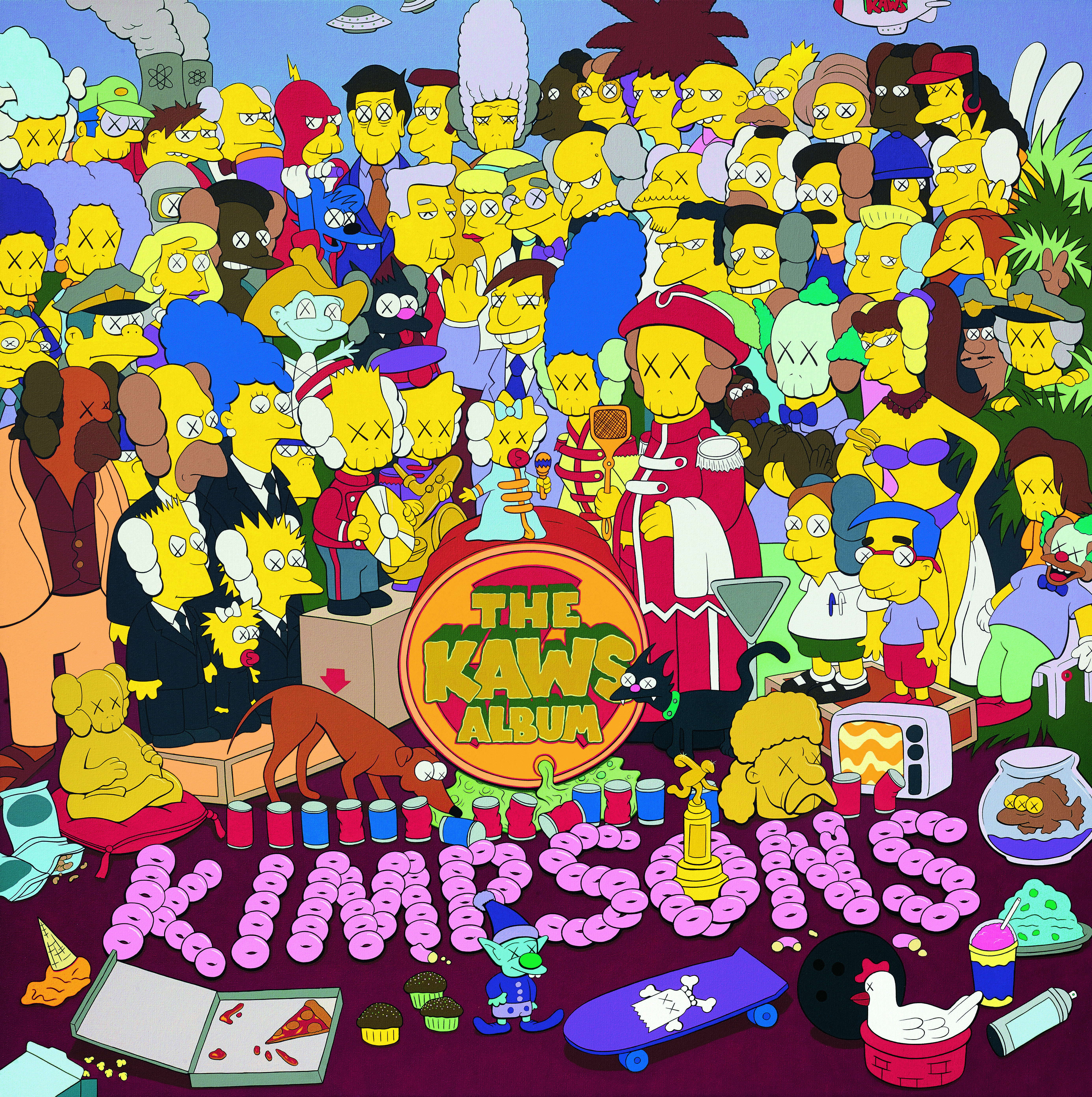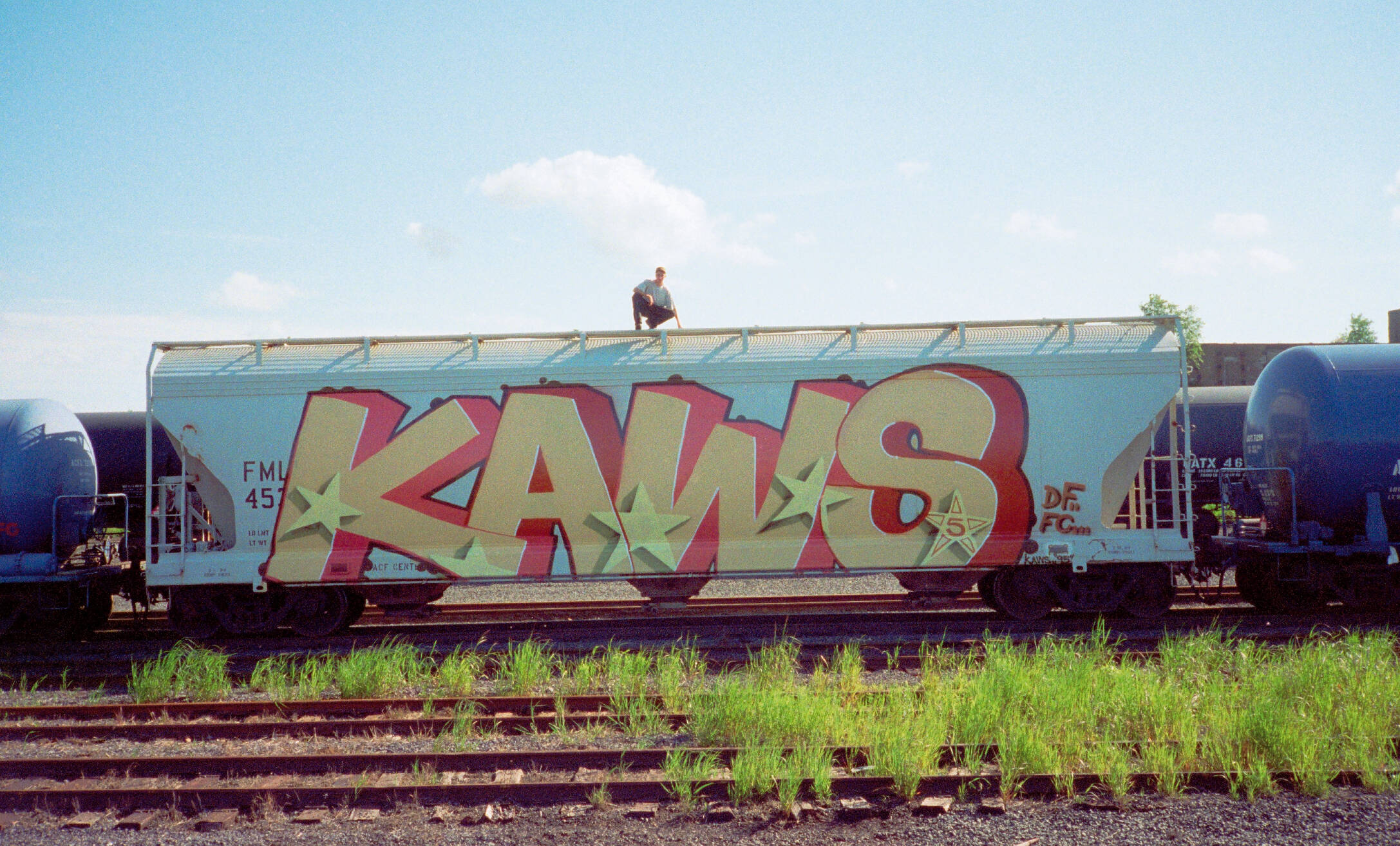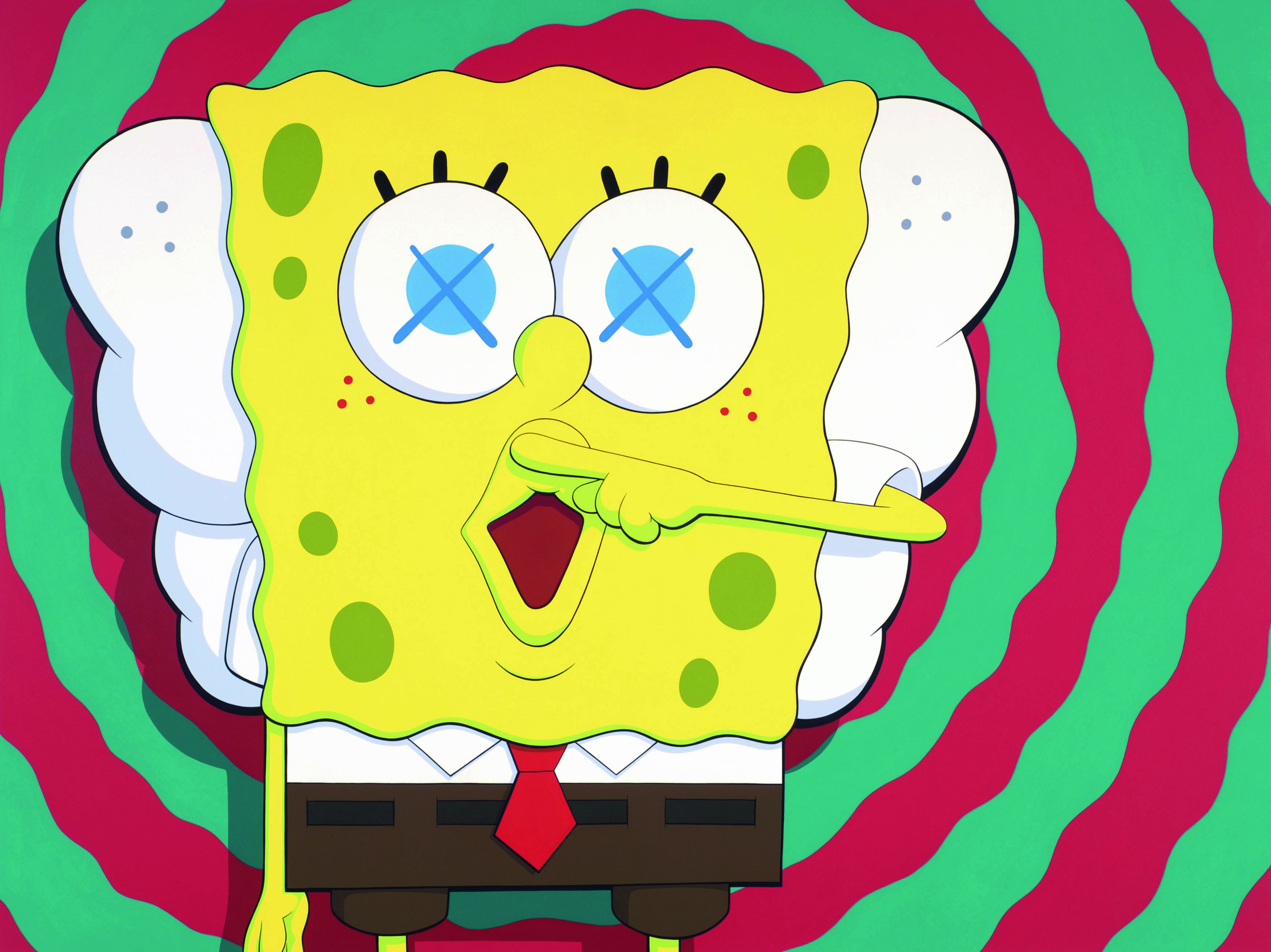
Summer Reads: Why KAWS messed with the Simpsons
On a visit to Japan the artist truly realised the power of internationally recognised imagery
25 years ago, in 1997, Brian Donnelly, the artist better known as KAWS, visited Japan for the first time. In some sense his artistic sensibilities were already fully formed; KAWS had received his MFA from the School of Visual Arts a year earlier, and had been working at Jumbo Pictures, an animation studio, creating backgrounds for shows such Doug and Daria. KAWS had also begun to develop his signature, bulbous, skeletal characters with x’ed out eyes, as part of his ongoing practice as graffiti writer.
However, it was in Japan that he realised the ubiquitous, global power of a friendly cartoon face. During that first trip – which KAWS paid for by trading one of his paintings with a friend’s brother – as well as on subsequent journeys to Japan, he met with fellow graffiti writers and other key figures in contemporary Japanese culture, including Yoshifumi “Yoppi” Egawa of HECTIC , Tomoaki “Nigo” Nagao, and Hikaru Iwanaga, founder of the toy-design company Bounty Hunter. The artist learned about novel approaches to culture, such as the Japanese practice of high-quality, limited-edition collectable toys, and the subculture of otaku – an obsession with Japanese cartoon culture, including manga and anime. And in attempting to overcome communication difficulties, he also discovered the simple appeal of popular, internationally distributed imagery.

UNTITLED (KAWS), 1995, Spray paint on freight train, New Jersey
“KAWS ’s experiences in Japan heightened his awareness of the ability of cartoon characters to speak to a shared experience that can cut across language barriers,” explains Dr. Eugenie Tsai, senior curator of contemporary art at Brooklyn Museum in our book, KAWS: WHAT PARTY? “He didn’t speak Japanese and found it difficult to communicate. However, in shops in Tokyo he noted the ubiquity of merchandise featuring characters from The Simpsons, an American cartoon series named after a fictional family that began to air in 1989. Referring to the father figure, KAWS observed: ‘It’s “You know Homer, I know Homer: we might not be able to have a meaningful conversation but to all of us, it’s still Homer.”’
Three years after that first trip, KAWS created his first painting series, which was based on the Simpsons. The works featured Homer and Marge, and their three children, Lisa, Bart, and Maggie, and paid tribute to some of the cultural developments he had noticed in Japan.
“While retaining identifying details of hairstyles and dress, KAWS overlaid each character’s face with his signature skull and crossbones with X-ed out eyes,” writes Tsai. “The square canvases were fairly small. KAWS decided to sell them in blister packs, the kind that hung on a rack in a store, emulating the look of other merchandise such as toys or batteries, working with Nigo to locate a manufacturer for the packaging. When he showed them in Tokyo First (2001), an exhibition at the Parco Gallery, they were displayed in a grid on the wall. The printed cardboard supports bore the label “The Kimpsons,” KAWS ’s appropriation of the title of the television series.”

KAWSBOB 3, 2007 by KAWS
KAWS might have been toying with low-brow, consumerist tropes, yet it wouldn’t take him long for the art world to elevate this work once more. The Simpsons family members and friends appeared in a number of KAWS canvases from 2001 through 2005, “in various situations ranging from the domestic to the theatrical,” writes Tsai. “Nigo commissioned KAWS to make individual paintings of characters from The Simpsons for his restaurant, BAPE CAFÉ !?, resulting in nearly fifty paintings. This included a larger painting, THE KAWS ALBUM (2005), based on the cover of The Yellow Album, the Simpsons’ second album of songs, from 1998 , which in turn played off the Beatles’ legendary album cover for Sgt. Pepper’s Lonely Hearts Club Band, from 1967, considered one of the first realisations of the growing movement to bridge the divide between popular culture and critical art practice.” That work sold at auction in Hong Kong on 1 April 2019 for $14.8 million, setting a new record for the artist.
By this point, KAWS had worked all manner of other globally familiar characters into his paintings, including the Smurfs, Snoopy and SpongeBob SquarePants. In some works, the figures are presented in conventional, cartoon settings. However, in more recent paintings, writes the curator and critic Daniel Birnbaum, the hard outlines and easy to decipher figures of these internationally recognised characters have been broken down into a jumble of cartoon outlines.

Pages from KAWS: WHAT PARTY?
Why has KAWS squashed and mashed the imagery in this way? Birnbaum suggests that KAWS’ take on commercial appropriation – coming decades after Warhol, Lichtenstein put Donald Duck and Mickey Mouse in their paintings – demonstrates “the icy emptiness of global networks.”
“In a blind universe inhabited only by brands and logos, all that remains is the ‘void and nothingness’ of our eyes. Two Xs staring out into a world devoid of meaning,” writes Birnbaum.
With some big, figurative cartoon sculptures, KAWS attempts to reintroduce “humanity into forms that have been constructed to communicate the brutal humour and heroism of cartoons,” Birnbaum argues. “His large sculptural works instead give expression to a rich emotional register. They capture moments of sorrow, compassion, and companionship.”
Meanwhile, in the new, near-abstract works, bits of chopped and rearranged cartoon characters offer viewers a kind of visual escape. “The increasingly maze like paintings, represent another approach altogether, one based not on recognition but on forms of defamiliarization,” Birnbaum writes. “The black line of (Snoopy creator) Charles M. Schulz has been freed of all referentiality and runs across the canvases creating a mesh of secret connections. The extreme zooming in on details creates abstract moments of overstimulation and sensual effect. The experience of disorientation produced by fractionalization and atomization can be liberating. Totally lost, I enter a world of intensities, released into the visual.”

KAWS: WHAT PARTY?
To view the progression of Homer and co, from simple appropriation to visual annihilation, order a copy of KAWS: WHAT PARTY? here.